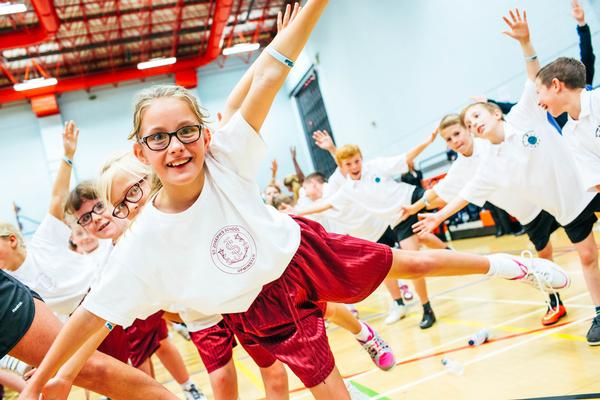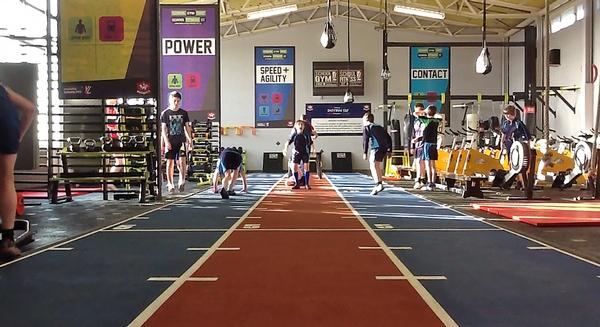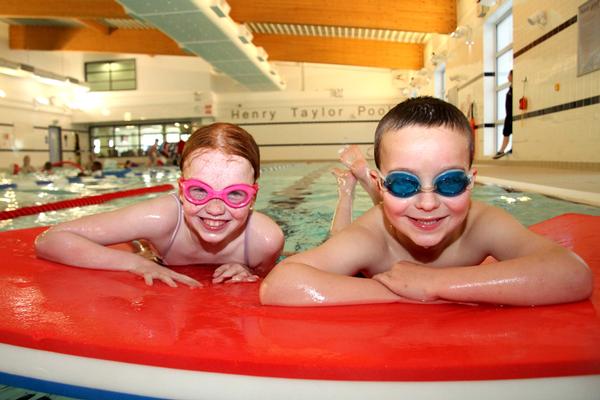 SELECTED
ISSUE
SELECTED
ISSUE
|
|
Leisure Management - Learning to be active

Kids’ fitness

|
|
| Learning to be active
|

In the face of high levels of inactivity and obesity among the nation’s children, a growing number
of initiatives are rising to the challenge of getting kids moving again. Julie Fisher reports
|
|
|

|
Mike Loosemore
Lead Consultant in Sport and Exercise Medicine
University College Hospital, London
“Active Movement is a behaviour changing programme that uses two characters – Stan (standing) and Sid (sitting) – to introduce children to the fact that standing is good. It aims to engage children through recognition and familiarity, and instils greater self-awareness of their physicality.
“Inspiring children aged 0–11 years, the characters are incorporated throughout the Active Movement programme and encourage standing up and movement within the daily routine.
“Initially a campaign of posters, language and role-playing, the programme intensifies in two further phases to be more dynamic through voiceovers, dolls, storybooks, nursery rhymes, games, homework, community integration and even a ‘live’ visit.
“The Active Movement Community concept also embraces parents and staff, and an adult programme has been developed that improves staff health while empowering them to educate children. Parents also become involved through children’s homework and constant communication.
“Abberley Parochial VC Primary School in Worcestershire applied the programme across the whole school of five- to 11-year-olds. Pupils were given a series of daily movements to do, particularly during lessons when they would normally be sedentary for long periods.
“The Sid and Stan characters were incorporated into everyday language during the school day, as well as additional activities during playtime and team events. Special homework was provided, and a series of posters, announcements, comics, leaflets and posters helped to educate the children about the benefits of activity.
“The results have been astounding. There was an emotional connection with Stan and Sid, along with a clear retention of their positive health messages. Behavioural questionnaires completed by staff about the children showed improvements in self-esteem, health optimism, self-protection against illness and health commitment (in one case by joining a gym).
“Parent interviews highlighted an excitement and commitment to the programme that has led to discussions with local secondary schools, in a bid to maintain children’s progress. A secondary school programme is now being developed and will focus on the curriculum, incorporating the scientific and biological dangers of inactivity compared with the physical, emotional and long-term benefits of being active.
“Overall, the programme aims to be a continuous and progressive process throughout school life, which we believe will make behavioural change more embedded and long-lasting.”
| |


|

The programme uses role play, storybooks, rhymes, games and homework |
|
|

|
Dean Horridge
CEO and founder
Fit for Sport
“Following the success of the Engage to Compete pilot project last year – in 27 schools in Manchester and 20 in Somerset, with 10,761 children taking part – Fit for Sport has been awarded nearly £200,000 of Sport England National Lottery funding to continue the programme in two new areas: Sandwell in Birmingham and Tower Hamlets in London.
“The programme aims to give primary school kids access to positive physical activity and school sport sessions, while simultaneously educating and involving adults and leisure/community providers in conducting the sessions.
“Fit For Sport provides training, support and mentoring for teachers and support staff, focusing on delivering a range of activities at playtime, lunchtime and after school to ensure all children meet the recommended guidelines of 60 minutes’ physical activity each day.
“We know schools are hard-pushed to get more PE timetabled, so we focus on maximising playground ‘downtime’. Initially we focus on key skills such as running, jumping, ball skills, co-ordination and agility, and our main aim is to excite children into being active and show them it’s enjoyable.
“To demonstrate progress, three tasks – throw and catch, agility run and a jumping co-ordination challenge – are performed at three levels of difficulty.
“The project seeks to involve all children in some form of physical activity. It links in with the School Games competition – within individual schools and against neighbouring schools – but Engage to Compete is carefully named: we must engage kids before they start to compete. As not all kids will compete for their school, we need an ongoing high level of non-competitive activity to keep all the kids active, even if they’re not going after medals and cups.
“The overall aim is to instil good activity habits that will continue after the two-term programme has ended.”
| |


|

Activities are delivered at playtime, lunchtime and after school |
|
|

|
Matt Roberts
Founder
Fitness 4 Life
“We launched Fitness 4 Life in 2013 as a social enterprise company with a policy to reinvest profits back into the programme. It provides a solution to schools that need to increase their children’s activity levels and counter poor levels of fitness and exercise participation.
“The system provides training for teachers, giving them tools to guide pupils through a structured, daily 20-minute programme of regular, fun and vigorous exercises. Daily exercise attendance is logged on the software and accompanied by an app that provides full video support, diarised session planning and graphs of the performance of each child and school. Termly results give the school and each child ownership and pride in their fitness development.
“In a pilot programme at primary schools across the London Borough of Lewisham, fitness scores among the children tested increased over a six-week period by an average of 12 per cent, and over a six-month period by an average of 21 per cent.
“The programme empowers schools to re-invest in the teaching staff while upskilling the workforce, and not only improves students’ fitness levels but also improves their self-confidence. It has also led to reduced levels of absenteeism and has even engaged teaching staff and parents into greater levels of exercise.
“We’re working with Sport London to roll out Fitness 4 Life into schools in all the London boroughs during 2015 and 2016. We also have schools across the UK launching the programme, and in UAE and Brazil in the coming year.”
|
|

|
Dr Mark Bellamy
Project Manager
School Gym / Leisure Lines
“School Gym is a concept that was developed and tested over a five-year period, and it’s now been rolled out in Dyffryn Taf secondary school in Carmarthenshire and Cardigan secondary school in Ceredigion, both in Wales. It’s a complete system for physical wellbeing and the development of physical literacy, in partnership with the schools and our team at Leisure Lines GB, and it’s designed to tackle obesity in a fun, motivational way.
“When we originally met the PE team at Dyffryn Taf, it was clear they were onto something – developing a school gym that pupils actually wanted to use. We worked with them to produce a complete equipment mix to support physical development, ensuring the whole set-up supported the school curriculum. It includes software for pupil expert coaching and monitoring of attainment levels, plus developing ‘train the trainer’ programmes to ensure School Gym can be rolled out country-wide.
“We want young people to be in an environment where they can play while developing the skills and knowledge that underpin true physical literacy. Much of the equipment is geared towards the gamification of PE, with the pupils making up their own games, rules and methods of scoring – for example, throwing medicine balls at alpha-numeric boards to answer maths questions, or making a numbered track where teams run to blocks to earn points by answering questions correctly. This helps ensure pupils who wouldn’t typically excel at PE become key members of the team.
“School Gym is having a significant impact on fitness and involvement levels – even among those not usually interested in PE or sports, many of whom are voluntarily attending additional sessions out of school hours – and obesity levels have dropped dramatically at the two schools. We’ve also seen the culture in the schools themselves change: staff have observed an improvement in behaviour, engagement, attitude, attendance, self-esteem and positivity among pupils.
“In addition, Estyn reports at both schools positively mention School Gym, and pupils who are moving from primary to secondary school are actively looking to attend these schools due to the School Gym. Cardigan School also has external students with special needs attending with their physiotherapists, using School Gym to exercise and undertake rehab work.
“Another School Gym location will open shortly, and we have a further three or four in the pipeline.”
| |


|

School Gym model is engaging even those not normally interested in PE or sports |
|
|

|
Julie Hilditch
Health and Physical Activity Development Officer
OCL
“The Kids’ Zone exercise referral scheme, run by OCL and funded by the Oldham Clinical Commissioning Group’s (CCG) Dragons’ Den project, launched in April 2014. After just a year, it has helped 64.6 per cent of children on the scheme to stabilise their BMI, and 25 per cent to lower it.
“Nearly one in five children aged 10–11 years in Oldham are obese and, if the current trend continues, two-thirds will be obese by 2050. Kids’ Zone specifically targets these children: initially we invited every reception and year 6 child taking part in the National Child Measurement Scheme who had a ‘very overweight’ BMI to join.
“Bringing them onto the programme gives them free access to a range of activities including swimming, trampolining, diving, gymnastics, badminton, climbing, table tennis and football.
“Stigmatisation can be a big barrier to uptake for many schemes, but Kids’ Zone sessions are integrated into normal classes at OCL; although the children are chosen for the programme due to their weight, they don’t feel singled out. No-one needs to know why they’re attending and this – plus the fact we encourage them to choose their favourite activities to inspire participation and increase attendance – helps them to feel part of the group, join in and get the most from whatever sessions they’re participating in. It’s this inclusiveness that has helped us get strong results.
“The project has already helped 103 children to become more involved in physical activity and lower their BMI. On the recommendation of the CCG, we’ve now broadened the scheme and made it available to children who are ‘overweight’, not just those who are ‘very overweight’. What we really want is to prevent, as well as treat, obesity, so opening up the scheme to more children makes sense.”
| |


|

Overweight and normal weight children all take part in activities together |
|
|
 |

MAKE A DIFFERENCE (M.A.D) |
 |
Mark Storie
Director / M.A.D Programme Co-ordinator
Astley Sports Village
“The M.A.D. – Make a Difference – programme is for significantly overweight, inactive students with self-confidence issues. Its aim is to re-educate them to participate in sport or activities with their classroom peers, support them with emotional issues, and encourage them to be health-conscious and adopt a healthy lifestyle.
“The young people participate in a 10-week programme, in which they use their once-a-week tutorial periods to visit Astley Sports Village in Dukinfield, Cheshire, for an hour of group physical activity such as basketball or dodgeball.
“Students are encouraged to be active by running, throwing and catching, and to try to ensure their team wins. It’s a big thing to get them to want to run for that ball and win that catch against a fellow student, so there’s a focus on team spirit to overcome any apathy towards activity.
“This is followed by a 30-minute session in the fitness suite, which features networked Precor equipment that enables pupils to input a long-term focus, such as losing weight, and set targets such as distance or calories. They can monitor their progress with the weekly goal summary, which indicates if they’re on or off target.
“They also attend an after-school nutrition session covering food sources, meal plans, timescales of sensible food intake and portion control, and complete a weekly food diary. A supermarket visit helps them explore healthy meal choices and choose their dinner for that night.
“The scheme launched last year with a pilot of 16 kids, and every member of the group improved their health and wellbeing, lost body fat and improved their cardiovascular system. Their outlook has also changed and self-confidence and self-esteem has been raised.
“PE teachers tell us that M.A.D. kids are now more active and committed to their PE lessons. They don’t feel intimidated because all the children are going through the same thing – they help each other out – which frees them up to engage with the activities. Meanwhile parental feedback shows students have made new friends in and out of school, take more pride in their appearance and are eager to share their workout success and data at home.
“Another group of 12 kids are now going through the programme, and we hope to roll it out to other primary and secondary schools in Tameside this year.”
|
|
 |
| Originally published in Health Club Management 2015 issue 5
|
|
 |
|